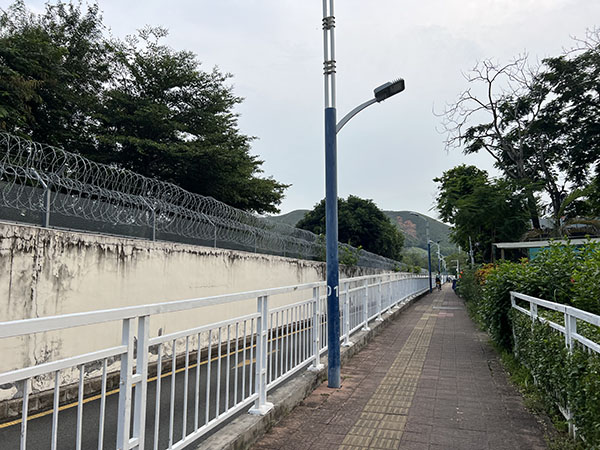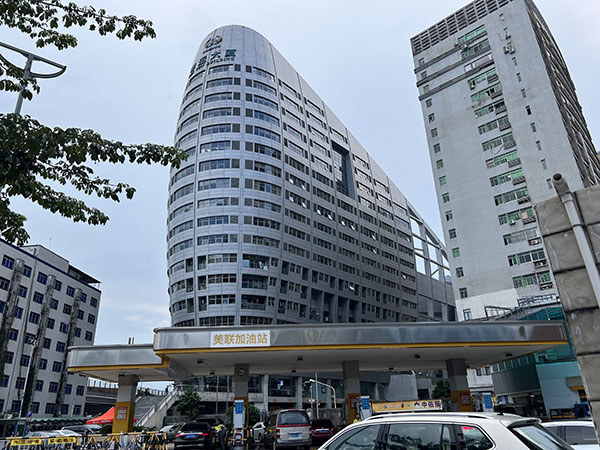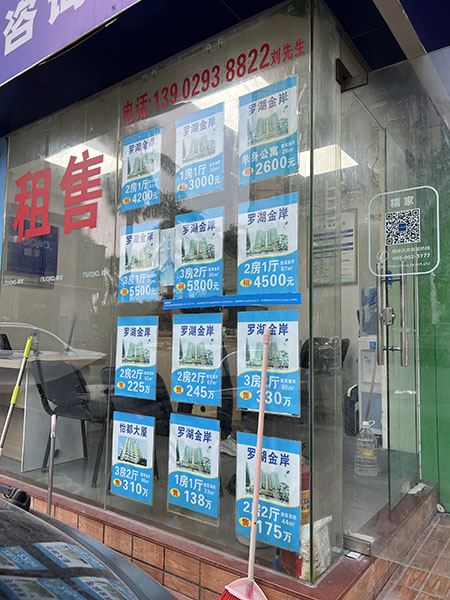The Shenzhen-Hong Kong border at Luohu manifests the contradictions and aspirations of integrating the two cities. On the one hand, the border has been solidified with concrete and barbed wire, while on the other, the border is presented as an easily accessible gateway to a modern shopping experience. Indeed, the concrete and barbed wire fence that lies parallel to the border is located directly behind Luohu Plaza, as seen in the pictures below.


Of course, the border has been Luohu’s raison d’etre, and so Shenzhen’s oldest urban district has a unique relationship to it. As part of trying to reclaim its importance vis-a-vis Futian and Nanshan, Luohu has been promoting its historic importance as the original Shenzhen. Five landmarks–Dongmen-Laojie, the Luohu train station, the Guomao Building, Fishermen Village, and the Shenzhen River–are central to this identity. Dongmen-Laojie, for example, was the amalgam of the old Shenzhen Market and its upgrade for tourists; the Shenzhen train station used to be the Luohu Train station until reform and opening and concomitent demolition of the original Shenzhen Train Station, which was located just west of Dongmen-Laojie; the Guomao Building which set the standard for “Shenzhen Speed;” Fishermen Village, which Deng Xiaoping visited in 1984 and used to promote the benefits of Reform and Opening Up policy, and; the Shenzhen River itself, which at first marked administrative and political differences and has been consolidated as a marker of true difference.
From the perspective of Luohu the border has always been an apparatus of integration. Each of its composite sites represents a different aspect of Luohu history, which comprised a complex ecosystem of formal and informal cross-border formations. Both the train station and Guomao were formal spaces, where the new city formalized relationships with Hong Kong. In contrast, Dongmen-Laojie and Fishingmen Village were informal spaces, where locals took advantage of location and kin networks to thrive. At the same time, the Shenzhen River was a porous border, with Luohu locals crossing back and forth, selling oysters in Hong Kong and smuggling in foreign goods for sale in Dongmen-Laojie. The fact that all of these locations were within walking distance of each other meant that Luohu residents, entrepreneurs and visitors had their choice of border crossings and were able to purchase both legal and contraband goods on the same shopping trip.
The consolidation of the Shen Kong border, especially since 2014, has understandably undermined the importance of Luohu. Futian and Nanshan thrive through formal integration with Hong Kong and are thus much better positioned to take advantage of the cities’ current status. Indeed, it is hard to imagine how Luohu will come back if entrepreneurial and informal uses of the border aren’t allowed. For example, the high-rise buildings and shops that were put up on Yanhe Road (literally “parallels the river” road) once thrived. Today, however, they have been squeezed into tight spaces between a thickening border, the formal city and its expanding network of bridges. Even high-end buildings are being used for storage and delivery processing. In fact, in the pictures below include rental prices for the border area, and those prices are significantly cheaper than elsewhere in Luohu, let alone Shenzhen.
Thought du jour is rather banal: the border really is what we make of it.












